
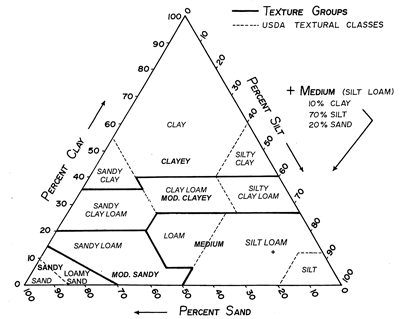 Importance of texture
Importance of texture
Texture largely determines how fast water will run into or through a soil horizon, how much water the horizon will hold, and how easily the soil can be tilled.
Determining Soil Texture
Texture is estimated by manipulating a moist sample with your hands, and feeling it with your thumb and fingers. Often the soil is too dry for estimating texture and must be moistened.
To estimate texture: Take at least a heaping tablespoon of soil, and try to mold it with your hand. Refer to the descriptions and pictures below to determine the texture of the surface and subsoil.
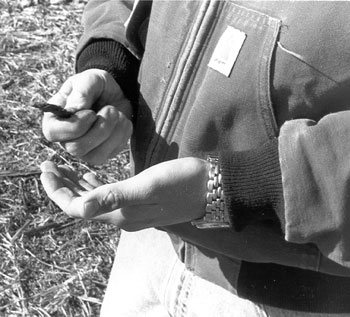
To estimate texture: Take at least a heaping tablespoon of soil, and try to mold it with your hand. The goal is to bring it to a moisture content so that it can be manipulated like modeling clay (Fig. 16).
Description of soil types
| Sandy | Moderately Sandy | Medium |
| Do not stick together enough to form a cast, (a) Cannot be formed into a ribbon, and are very grainy in appearance. They are not sticky. | Form a good cast (b) and a weak ribbon (c). Surface has a grainy appearance. They are not sticky. | Form a good cast and a moderately weak ribbon (d) Medium-textured soils are slightly sticky. |
| Moderately clayey | Clayey | |
| Form a fairly long ribbon (e). Appearance varies from very smooth to very grainy. They are relatively sticky. | Forms a long ribbon that can be squeezed very thinly and still support its weight (f) Appearance is very smooth and shiny. They are very sticky. | |
 |
 |
 |
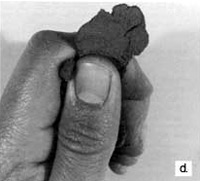 |
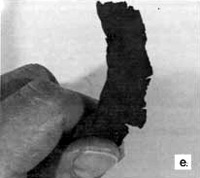 |
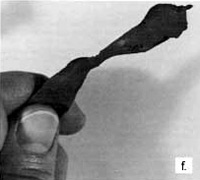 |
Soil evaluation texture groups contain the following standard texture classes: 1. Sandy—sands and loamy sands. For surface texture, determine the dominant texture in the plow layer or the upper 8 inches of soil. Determine subsoil texture in the finest layer (the depth that contains the most clay) exposed below the surface horizon. Note: Official judges may designate on the site card depths at which to judge surface or subsoil texture, or put samples in a container outside the soil pit. |


